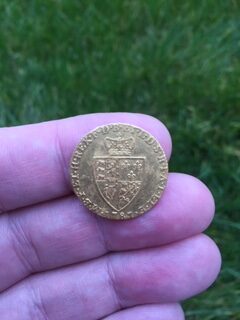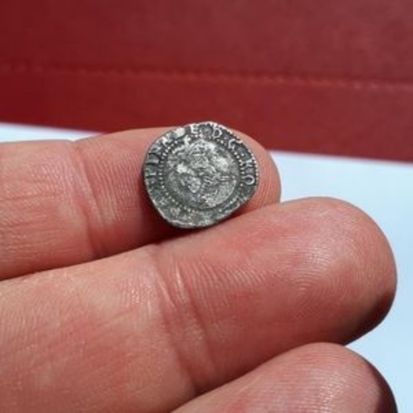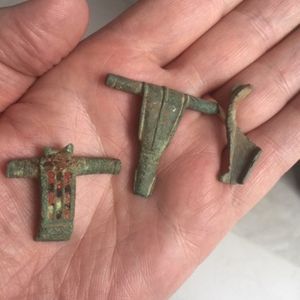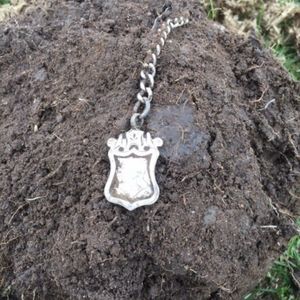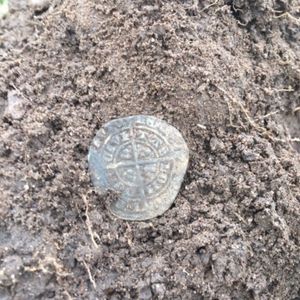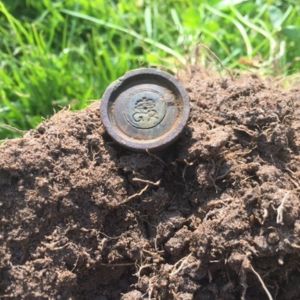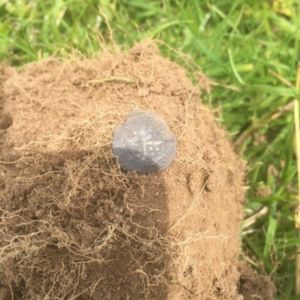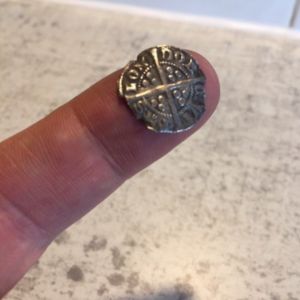Garrett Apex vs Vanquish 540
Before the launch of the Equinox 600 and 800 models in early 2018 by Minelab, the hobbiest metal detector scene was dominated by single frequency machines.
This was primarily because this was as far as the current technology took us. To those hard core detectorists and detector designers, it was well known how different frequencies performed.
Let me just supplement this mentioning the exceptions like the Whites DFX and Fisher CZ top end machines at the time that were “single frequency” but cleverly used some called “frequency harmonics” to produce a couple of frequencies.
This is too in depth for this article but it was worth mentioning for completeness.
It was widely the accepted norm that lower frequency machines were deeper and performed better on larger, thicker sectioned coins at depth and also recognised iron better.
Higher frequency machines weren’t as deep seeking but performed better on smaller targets and thinner sectioned coinage like hammered British silver coins.
It was also widely known that lower frequency machines were often slower at processing targets after they’d been found whilst higher frequency machines were faster, especially amongst shallow iron.
At this time, lower frequency metal detectors could be around 3Khz, middle frequency machines could range from 7-12Khz and higher frequency machines up to 18Khz.
Specialised small gold nugget seeking designed machines could at the time operate up to 40Khz. These machines would be designed for finding the smallest of targets in difficult terrain.
The difficulty was in choosing which detector was best. Did you go for a low frequency machine, a medium frequency or a higher frequency machine?
Whichever machine you chose, would you always be wondering if you’d missed a target? Would you have found it if your detector operated on a different frequency?
There were some very top end machines at the time that could use two frequencies simultaneously. It wasn’t two dedicated frequencies but used a clever way of a “frequency harmonic” of another one.
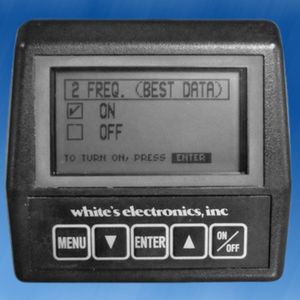
Typically, a Whites DFX which was incredibly expensive when I first started out could use 15Khz and 3Khz. It would take information from both frequencies to best determine the target type.
Another manufacturer offering this technology at the time was Fisher in their CZ-21 detectors. They could operate using 5Khz and 15Khz.
Minelab also used at the time something called BBS (Broad Band Spectrum) and FBS (Full Band Spectrum) in machines like their Excalibur, Explorer and Etrac. (I used an Etrac for ages!)
This was like multi frequency but was a digitised square wave technology rather than a VLF (Very Low Frequency) analogue technogy which was pioneered by scientist Bruce Candy.
People liked this technology but it got labelled as being slow to process signals. Things got better in subsequent machines as faster processors became more affordable.
Being widely known that different VLF frequencies have different benefits and shortcomings, the race was now on however to seek the newest, latest technology and multi VLF was it!
I have a more in depth article on multi frequency technology here.
It isn’t a great secret that Minelab pioneered the first multi VLF technology which they placed in their Equinox 600 and 800 detectors. (I currently use a Minelab Equinox 800)
This was the technology that everyone was talking about and waiting for. It made the worry of choosing a metal detector with the correct frequency disappear overnight.

This technology could now gather target information from the use of several frequencies simultaneously. The differences in how frequencies reacted with different targets were now harmonised.
Minelab call their system “Multi IQ” and is now available in their latest range of machines called the Minelab Vanquish which start with the 340, then the 440 and top out at the 540.
I have a more in depth article on the Minelab Vanquish range here. Once the patent that Minelab had taken out on this technology expired, other manufacturers were then free to reverse engineer it.
Garrett Apex vs Vanquish 540
The Garrett Ace Apex is from the American manufacturer Garrett and is their newest detector to offer this new multi frequency technology in which they call “Multi Flex”.
The Minelab Vanquish 540 is from the Australian manufacturer Minelab and is the top model of their mid range classification of detectors which use their multi frequency system called “Multi IQ”.
These two detectors are now being compared because they are virtually at the same price point. The Garrett Ace Apex being just more than a base pack Minelab Vanquish 540 but both sub £450.
One thing to say at this point is that this type of technology at this price point is unprecedented. Before the launch of the Equinox detectors, this would of been unheard of.
It actually gets better! If you aren’t bothered about bells, whistles and slightly reduced adjustability and want a “switch on and go” machine, the Minelab Vanquish 340 has the same power but is sub £250!

Unbeatable Multi Frequency!
You can now get the ultimate power of multi frequency technology over single frequency detectors with the Minelab Vanquish range of detectors.
The entry level Vanquish 340 now gives you ultimate depth, stability and sensitivity on all target types in every soil, including wet beach sand.
For this article, we’ll stick with the comparatively priced Garrett Ace Apex vs Minelab Vanquish 540. So, what are the main criteria to look for when comparing two machines before buying?
One could be the number of frequencies that are being used in the multi frequency system. This could determine at best if a target is detected and at least provide more target information on its composition.
Another thing to look at would be the size and type of coil that the detector ships with. As a norm, a larger coil has the benefit of increased depth detection and ground coverage.
The manufacturers will always tend to supply larger than stock coils and smaller than stock coils but these will always be additional at a cost.
Very often forgotten but weight might be a factor for you. You may have reduced mobility or find heavier detectors difficult. A harness could help here and I have an article on metal detector harnesses here.
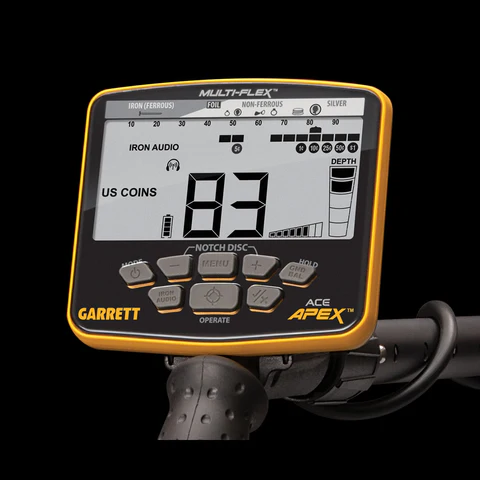
Another thing to look for possibly is the detectors connectivity in relation to wireless headphones. Wireless headphones offer increased freedom from tangled cables.
Different wireless system technologies offer different benefits and manufacturers have competing systems. Typically in our case here, Garrett has the “Z Lynk” system and Minelab have the “AptX”.
I have a further article on metal detecting wireless headphones here which delves a bit deeper into the wireless technology.
Finally, you may want to drill down on the bells and whistles along with the amount of adjustability in the machine. This helps to perfect a machines set up for the way you prefer to hunt.
This can range from the amount of segments a detectors ID scale is divided into, which helps fine tune notch discrimination to the amount of search modes, sensitivity adustment and number of tones.
On paper, the Garrett Ace Apex makes a galant effort to keep up with the Minelab Vanquish 540 but is just slightly out gunned on a number of key features.
The Vanquish 540 operates on 5 VLF frequencies where the Ace Apex only operates on 4. The missing frequency is in the 40 Khz range.
This could make a difference finding a very small, valuable object or even collectively with the other frequencies giving additional target information to identify a target more accurately at depth.
The stock coil that the Vanquish 540 ships with is slightly larger than the stock coil of Ace Apex which again, could sometimes make all the difference if a target is slightly deeper.
The coils on both machines are of a DD type so will both perform in difficult soils and offer great target separation. Perfect for finding good targets amongst iron or trash.
The search modes on both machines are about equal. The Vanquish has 4 built in search modes that include Coin, Relic, Jewellery and a Custom mode. It also has a zero discrimination button mode.
This equals the Ace Apex when you compare that the 6 search modes include a zero discrimination mode and a US Coin mode which non US detectorists won’t use.
The Vanquish does have a neat feature of having automatic Noise Cancelling functionality. The Ace Apex doesn’t have this. This function helps eliminate unwanted external electromagnetic interference.
This could be in the form of overhead or underground power cables or a nearby mobile phone transmitter for example.
Both have a Bluetooth option built into them but out of all wireless connections, Bluetooth is the slowest even though it means you can connect any headphones you may have at home.
Minelab’s “Apt X” system allows you to connect to Minelab Apt X headphones at much increased transfer speeds and a very low latency. (This transfer lag in the signal)
Finally, the Vanquish has an “Iron Bias” adjustable function which the Ace Apex doesn’t. When Minelab first launched their Multi IQ system, this function was included right at the last minute.
Initially used for testing, it can adjust the way the detector “views” iron. Iron is the detectorists nemesis and has the ability to give off ferrous and non ferrous signals depending on its size and orientation.
The Iron Bias function can help by at one extreme, excluding all of the non ferrous signatures making the iron much more recognisable. The other extreme is to allow all signatures to be heard.
Care must be taken with this function as turning it fully on can effect depth and recovery speed so the situation you are in on the day and your location will dictate how much you use this helpful function.
Let’s have a look at a video by US detectorist “Treasure Outdoors” where he compares both detectors on a buried 14k gold ring. These tests do have their merits and are useful but aren’t conclusive.
It does however show the detectors trying to detect under the same circumstances. It also actually includes a Nokta Simplex detector which is a single frequency machine for comparison.
Garrett Ace Apex Manual
The Garrett Ace Apex manual gives a great drill down into it’s functionality as depicted in the comparison table. You can find the Garrett Ace Apex manual here.
Minelab Vanquish 540 Manual
Again, the Minelab Vanquish 540 manual gives you a detailed look at the advanced functionality it has, especially over the Ace Apex. The Minelab Vanquish 540 manual can be found here.
Garrett Ace Apex vs Minelab Vanquish 540 conclusion
Both the Minelab Vanquish 540 and Garrett Ace Apex are very evenly matched, especially at their price points. For me however, the Vanquish 540 has some extra features and is just the better machine.
It’s not to say that the Garrett Ace Apex is not a worthy machine as it is and maybe in reality, it’s very equally matched. You can find the lowest priced Garrett Ace Apex over on Amazon here.
I have used a range of machines over the years from many manufacturers but I always come back to Minelab. My last machine was an XP deus and my machine before that was the Minelab Etrac.
I currently use an Equinox 800 but regularly compare signals to my friends Vanquish 540. The Vanquish finds everything I do. It just feels like a rugged quality machine.
The fact that it has an extra frequency and a slightly bigger coil over the Ace Apex along with noise cancelling and iron bias functionality just makes it a more rounded performer.
Why not also read my article comparing the multi frequency Nokta Makro Legend and the Equinox 800.
The fact that the same Multi IQ engine can be found in the sub £250 Vanquish 340 is also unbelievable!
You can find the lowest priced Minelab Vanquish 540 on Amazon here.
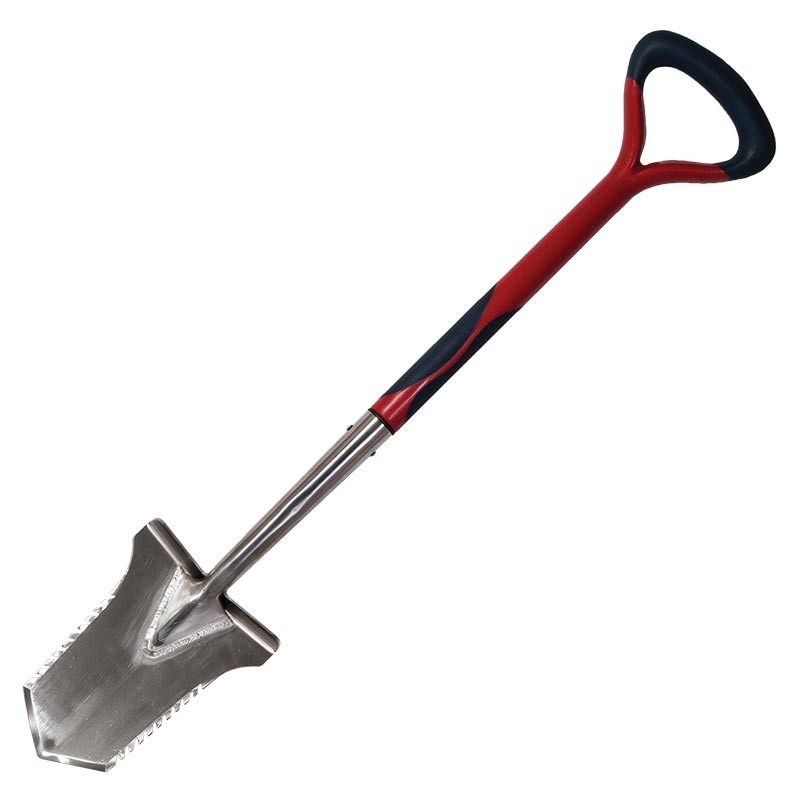
The Evolution Pro Cut
The ultimate accessary for the serious metal detectorist. Super strong, stainless steel specially designed spade.



